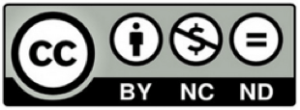In an upward 38.2 fibonacci retracement level, you can select the Fibonacci line tool, select the low price and drag the cursor up to the high price. The indicator will mark key ratios such as 61.8%, 50.0% and 38.2% on the chart. The Fibonacci sequence and golden ratio appear frequently in nature, biology, architecture and fine art. It is seen in flower petals, tree branches, human DNA and population growth.
In any financial market, price trends don’t move in a straight line. Firstly, with traders looking at the same support and resistance levels, there’s a good chance that there will be a number of orders around those levels. In other words, these important Fibonacci ratios turn out to become significant price points as they are used by many forex traders. If you are an active day trader who places your price targets at the next Fibonacci level, you could essentially close your position at the 23.6 or 0.0 Fib retracement levels. Moreover, it is suitable for all timeframes, including day trading and long-term investing. However, as with most technical indicators, the predictive value is proportional to the time frame, with greater weight given to longer timeframes.
Chapter 4: Fibonacci Ratios in Trading
For example, if the price approaches certain resistance levels, the trader can decide to place a sell order to maximize the profits. To begin the Fibonacci Retracement Analysis, find a strong upward or downward trend in the stock price. The study range for the analysis are the high and low points of the trend being studied. Fibonacci retracements levels are calculated based on the two points. The ratios form the support or resistance levels in Fibonacci Retracement analysis.
What is 50% Fibonacci retracement?
In my time trading I have read many articles and books which state the 50% Fibonacci retracement is the level in which the market has the highest probability of reversing at in the event of a retracement taking place, there are some reasons people give as to why the 50% level is so special in the market but you'll see …
Fibonacci Retracements can also be applied after a decline to forecast the length of a counter-trend bounce. These retracements can be combined with other indicators and price patterns to create an overall strategy. The Fibonacci trading tool is not only used to establish the retracement levels for traders as support or resistance; it can also project extension levels that show where the price could go to. Fibonacci extensions can, therefore, be used to determine stop-loss and take-profit levels or even potential entry levels for counter-trend movements. A trader can utilize Fibonacci support and resistance levels in a number of ways.
Are the Fibonacci Retracements useful in day trading?
An order which enables closing a profitable position on a predefined level. Please remember that in order to make sure you are comfortable using this technical tool or approach you have to do your own research and see if you can rely on this idea. We do not suggest you will apply any strategy without a thorough backtesting or forward testing on your part. For short term trading, I personally prefer 9 or 21 day data points.
US indices technical forecast: key support breaks hint at losses – IG
US indices technical forecast: key support breaks hint at losses.
Posted: Sun, 26 Feb 2023 23:14:00 GMT [source]
Each ratio is an indicator of how strong would be the reverse momentum. In other words, the higher the percentage is, the longer would be the price reversal trend. Whether you trade pullbacks, breakouts or indicators; NEAR you must have a trading plan to manage your position.
A general rule of thumb for the overall market is it trends 20% of the time and is range-bound the other 80%. Some advanced traders will take it a step further and add Fibonacci arcs and Fibonacci fans to their trading arsenal in search of an edge. These numbers are the root of one of the most important techniques for identifying psychological levels in life and in trading. Depending on what the market is offering, you might fluctuate between the low and high-volatility Fibonacci trader. Or, you may find yourself only using Fibonacci as an ancillary tool to support your trade plan thesis.
- The most common extension levels used by traders are the 138.2% and 161.8% levels, although there are many other extension levels used by different traders.
- Chart 5 shows JP Morgan topping near the 62% retracement level.
- When the alligator lines overlap, the alligator falls asleep and we exit our position.
- When it doesn’t work out, it can always be claimed that the trader should have been looking at another Fibonacci retracement level instead.
They were created from a ratio that is driven by the Fibonacci sequence discovered by an Italian mathematician in the early 1400s. Later on, around July 14, the market resumed its upward move and eventually broke through the swing high. Our gain and loss percentage calculator quickly tells you the percentage of your account balance that you have won or lost. Feel free to experiment with an ATR stop loss placement or some zone closer to the next Fib level, the 61.8%.
The Formula for Fibonacci Retracement Levels
The stock retraced back 38.2% to Rs.319 before resuming its up move. XRP Notice in the example shown below, the stock had retraced up to 61.8%, which coincides with 421.9, before it resumed the rally. Divide any number in the series by the previous number; the ratio is always approximately 1.618.
For instance, a trader notices that after significant momentum, a stock has declined 38.2%. As the stock begins to face an upward trend, they decide to enter the trade. Because the stock reached a Fibonacci level, it is deemed a good time to buy, with the trader speculating that the stock will then retrace, or recover, its recent losses.
A 38.2 fibonacci retracement level is expected to retrace a portion of the prior decline, while a correction is expected to retrace a portion of the prior advance. Once a pullback starts, chartists can identify specific Fibonacci retracement levels for monitoring. As the correction approaches these retracements, chartists should become more alert for a potential bullish reversal. Chart 1 shows Home Depot retracing around 50% of its prior advance.
We do not track the typical results of our past or current customers. As a provider of educational courses, we do not have access to the personal trading accounts or brokerage statements of our customers. As a result, we have no reason to believe our customers perform better or worse than traders as a whole. One of the most important concepts that are uncovered by the Fibonacci retracements is periods when the market is likely to consolidate. The most common Fibonacci ratios are the 38.2% ratio and the 61.8% ratio.
You can also see https://www.beaxy.com/ near the 200-day moving average which coincides with the initial resistance the S&P 500 index experienced at the 61.8% retracement level. Even during market trends prices tend to target specific levels before moving on to the next region. One of the best ways to forecast price targets is through Fibonacci retracements analysis. Fibonacci retracement levels are considered a predictive technical indicator since they attempt to identify where price may be in the future. Chart 4 shows Petsmart with a moderate 38% retracement and other signals coming together.
#SP500 Index is hanging on to its 38.2% #Fibonacci retracement level. But for how much longer? 🤔 pic.twitter.com/YvZO46Boqp
— StockCharts.com (@StockCharts) December 20, 2022


